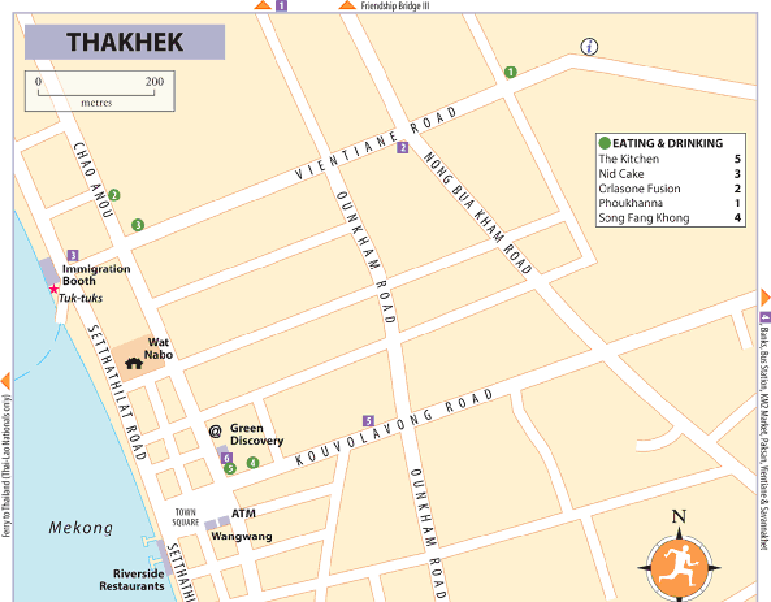Travel Reference
In-Depth Information
Thakhek and around
Less visited than Savannakhet to the south,
THAKHEK
, capital of Khammouane province,
is gradually gaining popularity as the best base to explore the nearby
Mahaxai Caves
and
karst formations, and the massive
Khammouane Limestone NBCA
. It is also a good entry
point into Laos from Nakhon Phanom in Thailand, as well as being a handy place to break
the long journey down Route 13 to Savannakhet.
Take a short walk out from the town square and you'll find crumbling French villas, over-
grown gardens, and, despite the ever-present roar of kids on mopeds, an almost haunted at-
mosphere pervading the too-wide streets. It's hard to believe that during the Second Indoch-
ina War, Thakhek was a sort of Havana on the Mekong, with visiting Thais flocking to its
riverbank casino. These days, it's Nakhon Phanom on the opposite bank that's the big met-
ropolis, though since the opening of the third Thai-Lao Friendship Bridge in 2011, the town
has caught up with its neighbour somewhat, with investors from Vietnam and China clam-
ouring to build new hotels, offices and factories.
Brief history
Thakhek's roots date back to the Chenla and Funan empires. The name Thakhek, which
means “Visitor's Landing”, is relatively new, but is a reference to the town's importance as
far back as the eighth century. As Sikhotabong, and later Lakhon, Thakhek was a principality
spanning both banks of the Mekong, and a hub for trade routes connecting civilizations in
Vietnam, Thailand and Cambodia. Its former spiritual centre, the shrine of That Phanom, is
now in present-day Thailand and is still the holiest site in ethnically Lao northeastern Thai-
land. When the kingdom of Lane Xang was formed under the leadership of Fa Ngum in the
fourteenth century, Sikhotabong's governor oversaw the southern extent of the Lao empire.

